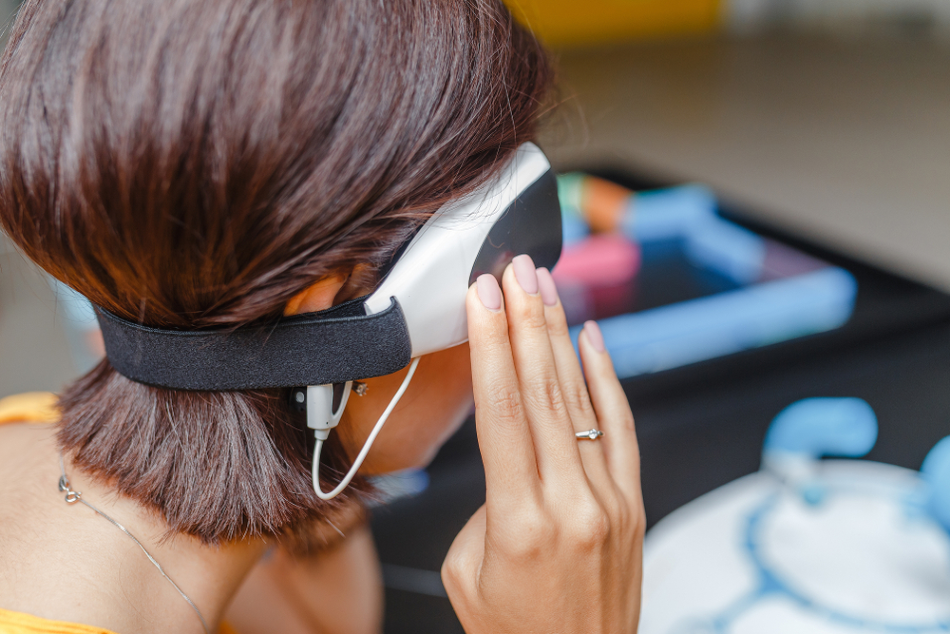
Image Credit: frantic00/Shutterstock.com
The incorporation of sensor technologies into the Internet of Medical Things (IoMT) has transformed how clinicians remotely monitor the health of their patients.
What is IoMT?
The Internet of Things (IoT) is a self-configuring network of both physical and virtual objects connecting a wide variety of information networks ranging from data processing and the internet to networking and communication devices.
When applied to the healthcare domain, IoMT brings diverse communication technologies, such as wireless sensors that remotely monitor patient health, together with processing units, to allow clinical information to be immediately sent to healthcare providers.
IoMT enables caregivers to continuously monitor the health of their patients, which improves clinical decision-making, reduces medical expenses for patients, and ultimately increases patient outcomes.
Characterizing IoMT Sensors
Millions of biosensors have been introduced and integrated into the IoT-enabled healthcare domain to support its numerous applications. These include clinical diagnostics, fitness tracking, predictive medication, smart home care, and several monitoring services ranging from sleep and women’s health to cardiac activity, glucose, and infant monitoring.
In addition to being classified for their specific application, IoMT biosensors can also be categorized as disposable health, connected health, IoT-supported, and IoT market cap sensors.
Disposable Health Sensors
Disposable health sensors are typically used for diagnostics, patient monitoring, and therapeutic support. The sensors are often implementable, ingestible, and strip-type. California-based Proteus Digital Health Inc developed a unique disposable health sensor named Proteus Discover.
Ingestible sensors
As the world’s first Digital Medicine, Proteus Discover is a four-part system that comprises an ingestible sensor, wearable patch, mobile application, and the provider’s portal.
The ingestible form of Proteus Discover can be used with any prescribed medication that has been embedded with a sensor the size of a grain of rice.
This tiny sensor consists of a microfabricated integrated circuit with thin layers of magnesium, copper, and gold.
Each of these circuit layers reacts with the gastric fluid as the ingested pill reaches the stomach. This triggers an electrochemical reaction within the sensor. As the sensor is powered by this reaction, a digital code that reflects the type of medication, dosage, and time of ingestion is transmitted to the patch worn by the patient.
Patch sensors
The Proteus Patch, which is worn on the torso and set in place by an adhesive, not only records the patient’s ingested medication information but it is also used to monitor the patient’s heart and respiration rates, sleep activity and daily movements.
All of this information is sent to a smartphone application, allowing the patient to keep track of their daily activities and medication schedules, and, subsequently, the Discover Portal.
Within the Discover Portal, physicians and other healthcare providers obtain important information on the daily health reports of their patients to determine the best treatment options.
The Proteus Digital Medicine model has transformed healthcare by improving medication adherence, which reduces treatment failures and the need to re-treat patients.
Connected health sensors
Connected e-health sensors can be further categorized as end-use market, sensor, and platform sensors. End-use market sensors for IoMT include wearables, embedded devices, and invasive sensors.
Wearables
Wearable sensors are continuously worn or placed in direct contact with human skin to closely monitor the individual’s activities without interrupting or limiting their normal movement.
Motion trackers are a particularly popular type of wearable health device that has several useful applications not only within the medical field but also for sports, fall risk assessment, and monitoring of the elderly population.
Smart clothing
Aside from their usefulness to motivate users to track daily workouts and maintain a more active and healthy lifestyle, many wearable devices have also been used to measure critical elements in healthcare monitoring, the most common of which include an electrocardiogram (ECG) and electroencephalogram (EEG) measurements.
One exciting technology designed to integrate wearable sensors with critical health monitoring tools is body-worn smart clothing.
Smart clothing allows individuals with chronic diseases to benefit from a full-range health monitoring system, as compared with existing technologies that often only record a limited number of physiological signals.
Israel-based company HealthWatch has emerged as a pioneer in the development of smart-digital garments, particularly with its development of the Master Caution®.
Master Caution® is the only 12-lead ECG remote monitoring smart clothing that has been cleared by the United States Food and Drug Administration as a medical device.
This sensor-rich textile garment measures 3-12 lead ECG that not only provides healthcare providers with continuous monitoring for cardiac events such as ischemia and arrhythmias, but can also sense changes in the patient's respiration rate, sudden falls, inactivity, and body temperature.
Sources and Further Reading
- Medical Things era: A systematic review of current and future trends. Computer Communications 150; 644-660. doi:10.1016/j.comcom.2019.12.030.
- Ray, P. P., Dash, D., Kumar, N. (2020). Sensors for internet of medical things: State-of-the-art, security and privacy issues, challenges and future directions. Computer Communications. doi:10.1016/j.comcom.2020.05.029.
- Haghi, M., Thurow, K., Habil, I., Stoll, R., & Habil, M. (2017). Wearable Devices in Medical Internet of Things: Scientific Research and Commercially Available Devices. Healthcare Informatics Research 23(1); 4-15. doi:10.4258/hir.2017.23.1.4.
- “Proteus” – Proteus Digital Health
- “Technology” – HealthWatch
Source: https://www.otsuka.co.jp/en/
Disclaimer: The views expressed here are those of the author expressed in their private capacity and do not necessarily represent the views of AZoM.com Limited T/A AZoNetwork the owner and operator of this website. This disclaimer forms part of the Terms and conditions of use of this website.